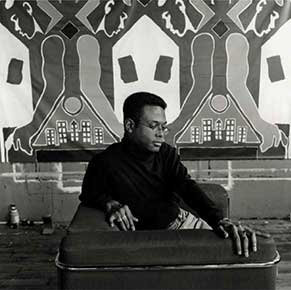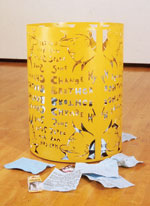Each in Their Own Voice: African-American Artists in Cleveland, 1970-2005
Mark Howard interview excerpt, 28 October 2008
Instructions for controlling the program with a keyboard.

Please note that Flash Player 10 (or higher) OR an HTML 5 compatible browser as well as JavaScript is required to play this recording. If you experience problems, please check your version of Flash or update to a more current browser and make sure JavaScript is enabled.
Program Length: 03:00
Artist Mark Howard discusses his personal background and career; including his family and art education. Howard, born in Newark, New Jersey, realized he had artistic abilities as a young child. With early encouragement from his mother, who provided Howard with his only real inspiration, Howard pursued his interests in drawing and had an "insatiable" demand for paper and art supplies. Although Howard's early education did not provide arts programs, his teachers continued to encourage his abilities.
Howard moved to Cleveland in 1981 and enrolled at the Cleveland Institute of Art. While taking classes, several artists including Julian Stanczak, Wanda von Wiess and Ed Michkowski influenced Howard. After graduating in 1986, Howard decided to remain in Cleveland. Howard created art work using several mediums including painting, silk screens, and paper cut-outs.
Much of Howard's work maintained a black sensibility and urban theme, using life in the streets as his primary influence. Recently, Howard designed public art for Cleveland's Euclid Corridor Project. Howard's public art includes tree grates featuring textile designs of Indian Wampum belts and decorative trash cans using laser cut steel to create symbols that "make no sense" since Euclid Avenue is supposed to be a "smart street".
Rights: Organizations and individuals seeking to use materials for public exhibition and/or commercial use must obtain permission from the History Department of Cleveland State University. Use of materials for educational and research purposes is considered fair use.






